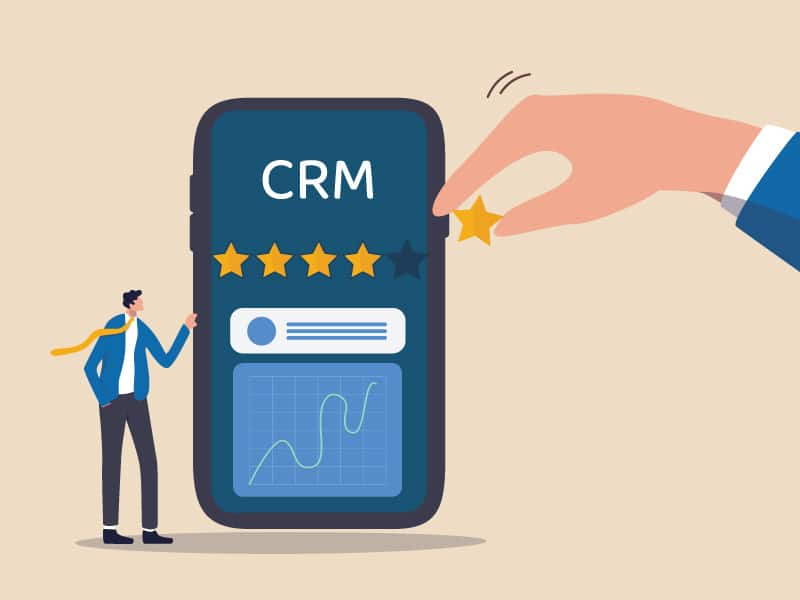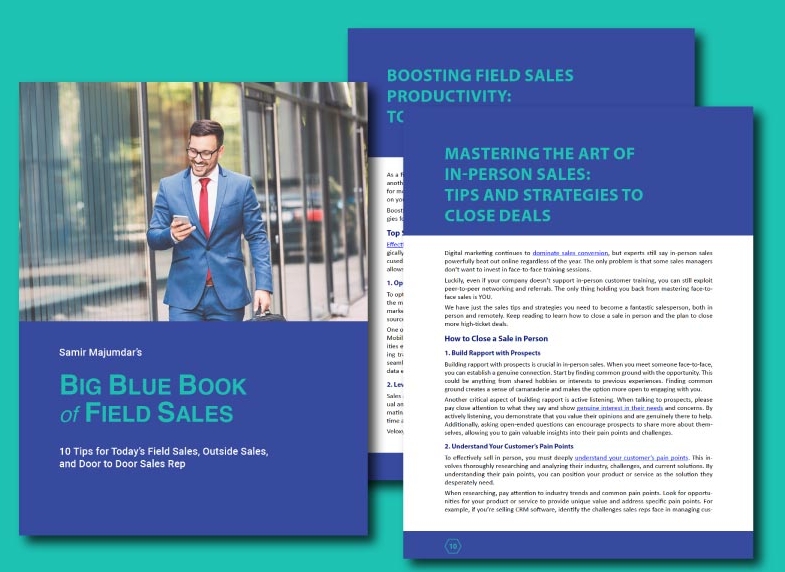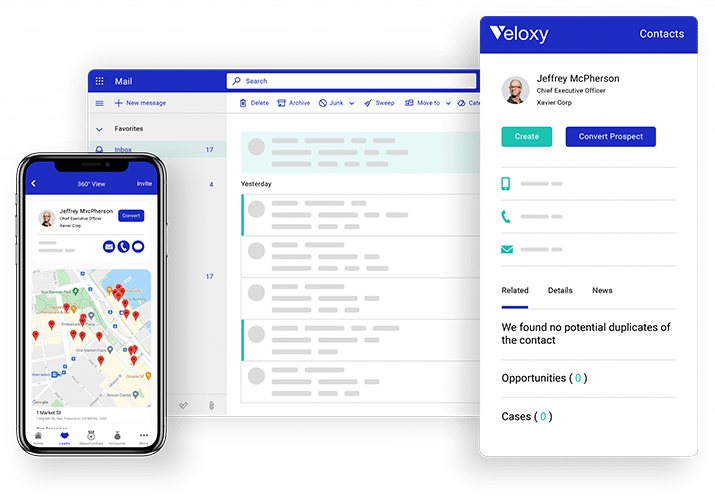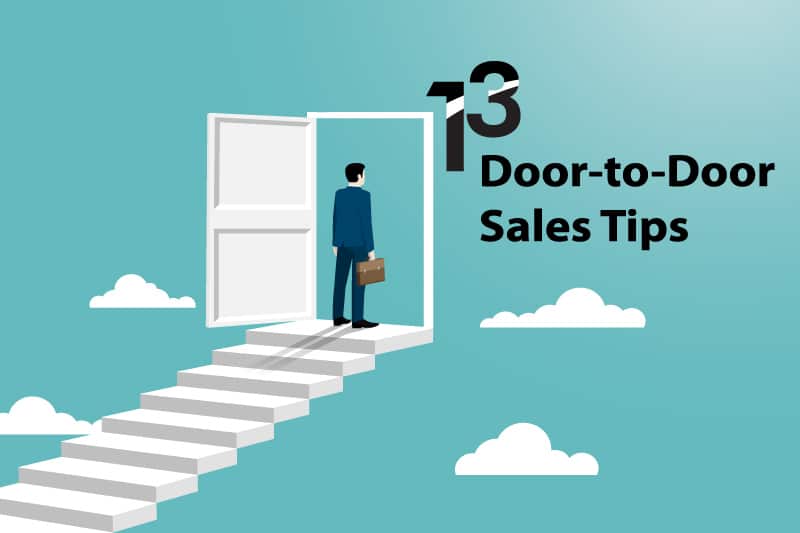
Best Mobile CRM Apps to Boost Your Sales Productivity
Did you know that using mobile CRM apps can boost sales productivity by 14.6%? So that’s a no-brainer, right? It’s time for you and your sales team to embrace these apps! But what are your best options in 2024? Today I’m breaking down my top recommendations for the best mobile CRM apps. I’ll look into how these mobile CRM tools can
























The average door-to-door salesperson makes about $22.90 per hour (or $47,622 a year). This can vary significantly depending on how good a salesperson is at their job.
Door-to-door sales can be a great way to make money, but it’s not without challenges. It isn’t for everyone, and you need to know what you’re doing if you want to succeed.
Two people could be selling the same product, but experience very different results. You’re not just selling a product or service, you’re selling yourself. There are various things you can do to become successful as a door-to-door salesman (and an outside salesman in general).
In this guide, we’ll cover some of the best door-to-door sales tips to help you achieve your goals. Keep reading for more.
1. Know Your Product Well
Before you start thinking about the most effective sales techniques, you need to cover the basics. Anyone who wants to sell anything needs to have a good understanding of what they’re selling.
This is because you need to be able to explain it to prospects. You want to cover what your product does, how it can help, why it’s better than other options on the market, and more.
It’s important that you don’t just have a prepared speech here. While it can be good to carry the sale with a strong pitch, you also need to be prepared for any questions.
If someone is interested in your product, they’ll have more questions about it, and it’s vital you can answer these quickly and clearly. Nothing will put people off faster than uncertainty. They’ll only make a purchase if they know the product can do what they want it to.
It can help to have a coworker pose as a lead and go through a sale scenario with them. You can then get an idea of the kinds of questions people may ask and how you should respond to them.
2. Research Your Leads
On top of the product they’re selling, every door-to-door salesman should know who they’re selling to. As such, you should take the time to create a customer profile, and you can form your sales technique around it.
This will involve some research. You want to figure out the priorities of your leads so you can figure out what they’re looking for. Use all resources that you have at your disposal to gather information on objectives, strategies, and challenges.
It’s best to specify the top three priorities of your customer persona. You then want to determine how your solution aligns with at least one of these priorities. If it doesn’t align with any, you should look over your proposition again.
3. Dress Appropriately for Your Market
This is one of the easiest aspects of door-to-door sales, but it’s easily forgotten. First impressions are vital in all walks of life, and this is no different here.
Most people will assume this means a suit and a tie. While this can be the right choice for some, it may not be the best option for others. You need to consider your approach, what you’re selling, and who you’re selling to.
It’s important to keep things professional, but that doesn’t necessarily mean a suit and tie. Smart jeans and a shirt can be better if you want to give a more casual feel, for example.
On top of this, you want to make sure you dress appropriately for the weather. Being too hot or too cold can make your job far less enjoyable, and leads will notice that you’re uncomfortable, which could affect sales.
Bear in mind that you’ll be doing plenty of walking every day. Comfortable shoes are vital if you don’t want to suffer.
4. Visit Doors at the Right Time
The time at which you knock on doors can have a sizable impact on your success rate. Firstly, you want to make sure you’re knocking when people will be home.
It may be more convenient for you to go door-to-door during the middle of the day, but most people are likely to be at work. The fewer potential leads you can speak to, the fewer sales you’ll make.
The day of the week is worth taking into account too. At the weekends, for example, you’ll typically find more people at home during the day.
The weather is also important here. Even if you’re dressed comfortably for cold or wet weather, you’ll often have better luck on nicer days.
If it’s cold and raining, people won’t want to stand with their front door open listening to you talk about your product. On a nice day, however, this won’t be an issue.
5. Visit Only the Most Appropriate Leads
When it comes to sales strategies, most people go in with the idea that the more doors they knock on, the more sales they’ll make. In theory, this is true, but you only have so many hours in the day, and can therefore only knock on so many doors.
Efficiency is key, and one of the best ways to improve efficiency is to only talk to leads that you’re likely to be able to sell to. This wasn’t so simple in the past, but modern technological advancements can make it easier to choose your prospects more carefully.
Even if you’re going to fewer doors, picking the right leads will give you a higher success rate. This will ultimately result in more sales overall, and will help keep your morale up. Every day, you’ll feel less burnt out as you experience fewer rejections, making it easier to stay on form.
6. Angle Your Body
You need to make every conversation count, and there are some things that you can do to help that are more subtle. In many cases, the person you’re talking to won’t even notice certain tactics as they affect people subconsciously.
Your posture can have a huge impact on how leads perceive you when talking to them. If you stand facing them straight on, for example, you might come across as aggressive. Turning to the side so you’re at a 90-degree angle to them indicates that you’re ignoring them.
In a sales situation, you want to be somewhere between these two. Standing at about 30-45 degrees eliminates any aggressive implications, but shows that you’re interested and attentive. Standing like this will help the lead relax, which will make it much easier to secure a sale.
It can be a good idea to practice standing like this even when you’re not working. Getting into a habit of having a good stance in everyday life will develop your muscle memory. You’ll then begin standing like this when talking to leads without even thinking about it.
7. Ask if It's a Good Time
One of the first things you should always do when you start talking to a lead is ask them if it’s a good time. With that in mind, your exact choice of words is something you want to be careful with.
If you simply ask “Did I catch you at a bad time?”, most people will naturally respond with “Yes”. You want to engage them in a way that will help the conversation.
For example, you could say “Did I catch you at a halfway decent time?”. In many cases, this will get a laugh, and you’ll have an easier time steering the conversation towards your pitch. With this, you’re showing that you’ve acknowledged that it might not be the best time for them, but they’re still more likely to give you some time and listen to what you have to say.
8. Immediately Address Common Objections
With a door-to-door sales career, you need to accept that there will be plenty of times when people don’t want to talk to you. If you can recognize the signs of this, then you may be able to steer the conversation in a way that improves things.
There are plenty of objections that a lead might make. The most common are generally based on time and money, so it can be a good idea to alleviate these straight away. You can do this by saying something like “This will only take a couple of minutes and it won’t cost you anything”.
These are the go-to excuses for a lot of people, so being able to eliminate these will make them less likely to object. Even if they’re trying to think of another, this will give you time to move on to the next step of your pitch.
9. Exhibit Confidence
Confidence can have a huge impact on any conversation, and it’s especially important when it comes to sales. Exuding confidence will help build trust in both you and your product. As such, they’ll be more likely to listen to what you have to say and will be more interested in making a purchase.
This ties back to understanding your product. Everyone can talk more confidently about something they understand. Knowing your product well will make it easier to maintain your confidence throughout your pitch and while a lead is asking you any questions.
If you’re confident, you’ll also have an easier time adapting to each conversation. While you’ll have an ideal customer persona, each lead will be different. Being able to adapt to every conversation will make it easier to navigate the sale without any issues.
10. Make a Genuine Connection
This isn’t always possible, but a skilled salesperson will be able to build connections with a lot of their leads. You may be a salesperson trying to sell something to a lead, but ultimately, you’re both two human beings having a conversation.
If you want to build a connection with a lead, you need to focus on more than just making a sale. This can be through something as simple as asking how their day is going. It’s not a big question, but it shows that you’re interested in more than just making sales.
If there’s something about the lead or their home that connects directly with you, it can be great to mention it. You might spot their dog and notice that it’s the same breed as yours, for example. Things like this won’t always happen, but when they do, mentioning them can be a great way to quickly build a connection between yourself and a lead.
11. Get to the Point
It’s good to open with pleasantries and form the basis of a conversation, but you also don’t want to waste your lead’s time (or your own). As soon as it’s appropriate to jump into your pitch, you should.
If someone feels like you are wasting their time, they’ll be put off and will likely stop listening to you. This can greatly reduce your chances of making a sale.
If it’s appropriate, you can schedule another discussion with them at a more convenient time to go into further detail. This will make it easier to keep the initial conversation short and sweet.
12. Discuss Pain Points, Then Pitch
If your product doesn’t solve any problems for a lead, it’s very unlikely that they’ll have any interest in buying it. You should have a good idea of the problems that it solves, and you can structure the pitch to make these clear.
Start by mentioning the pain points so that the lead is aware of them. You can then proceed to talk about the product and how it can solve these problems. You’re thereby explaining an issue, and providing them with a solution immediately after.
13. Allow the Lead to Speak
When you’re trying to make a sale, it can be easy to get carried away. You want to show authority and carry the conversation, but it’s also important to allow dialogue from the lead.
This will give them a chance to explain their needs or express any concerns. Showing that you’re an attentive listener and happy to help will build trust, and you can explain any aspects of your product that the lead is uncertain about.
Using These Door-to-Door Sales Tips
Sales aren’t easy, but by implementing these door-to-door sales tips you’ll be able to achieve your goals and be far more successful. Making use of any tools at your disposal will give you a competitive edge.
Veloxy is a cutting-edge sales tool that offers a range of features that can improve your sales career. Try it for free today to see how much it can help.
And if you need help with emerging best practices before you hit the road, check out these blog posts: